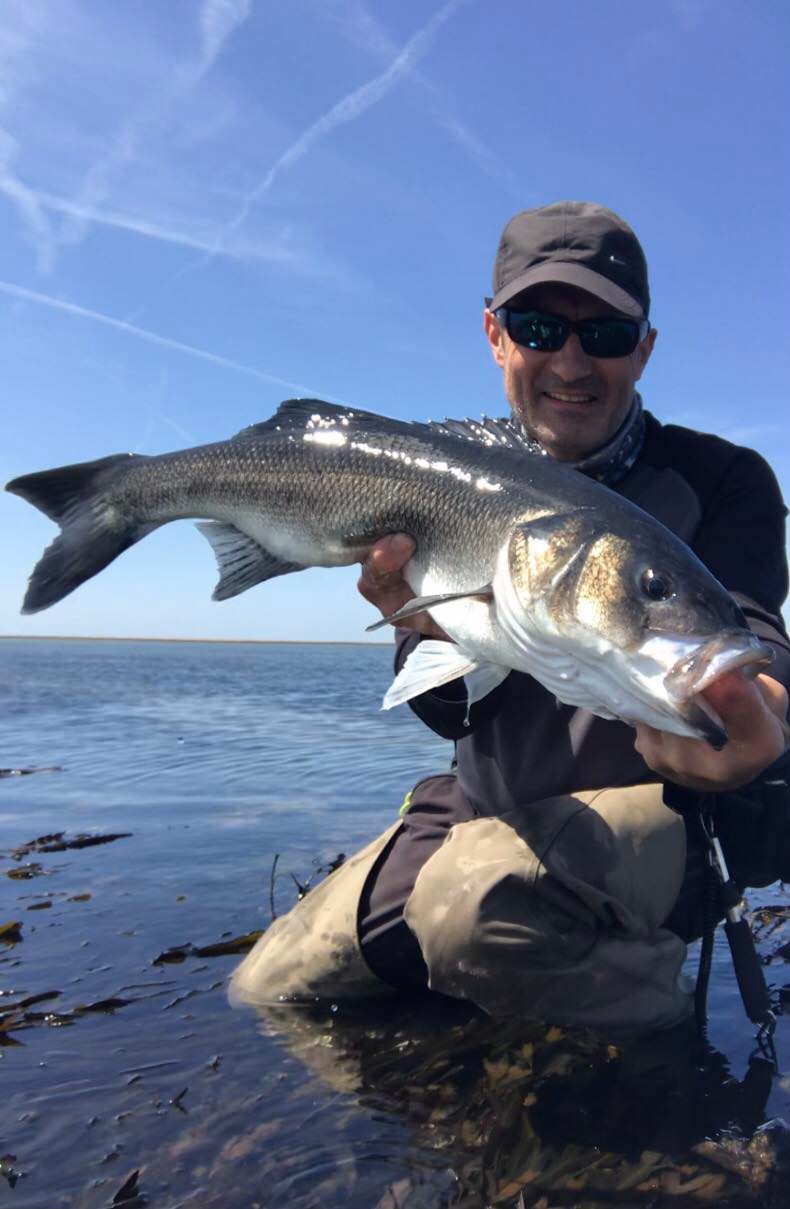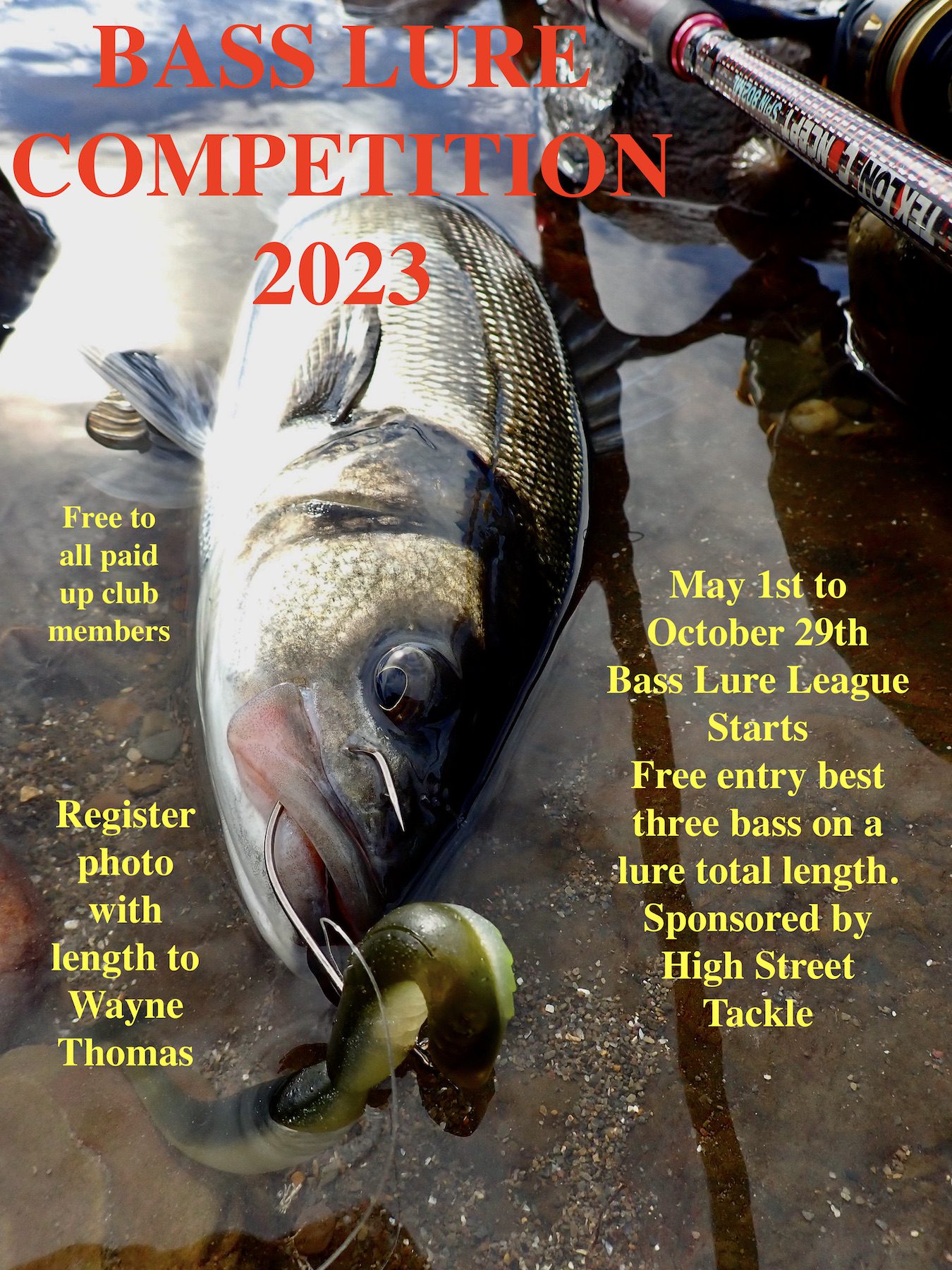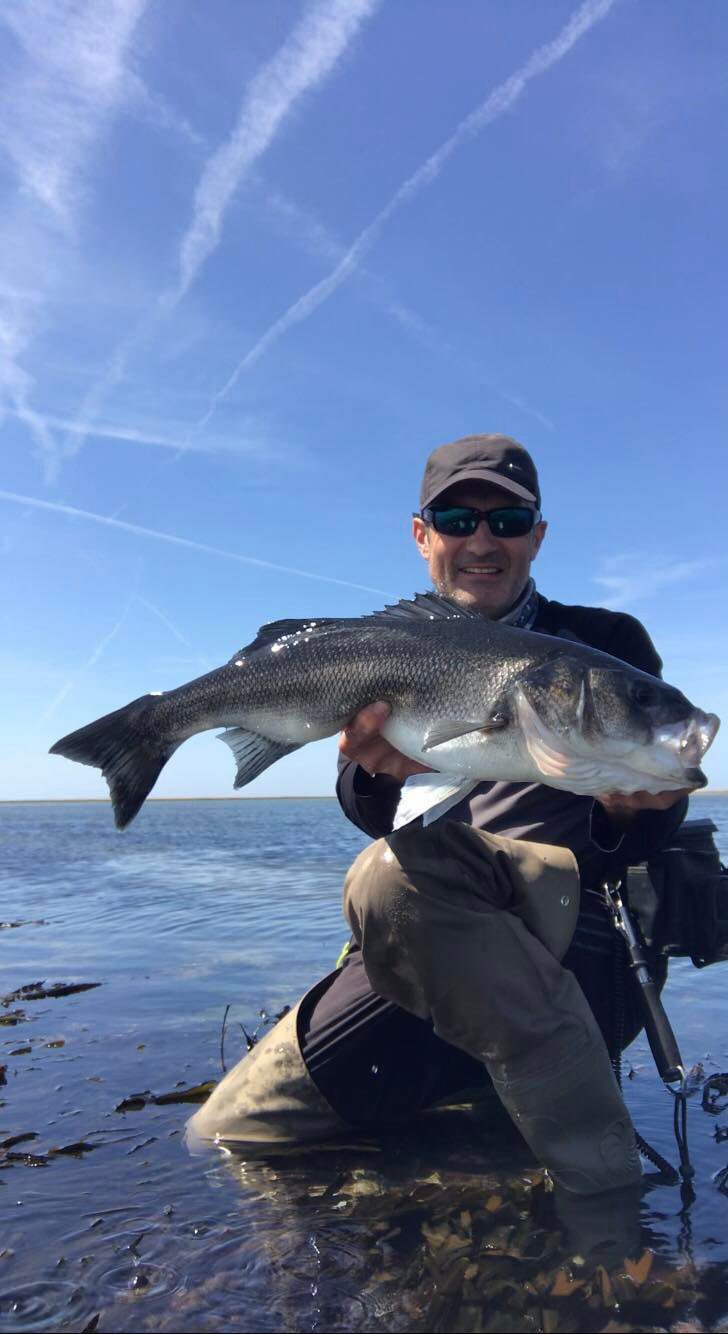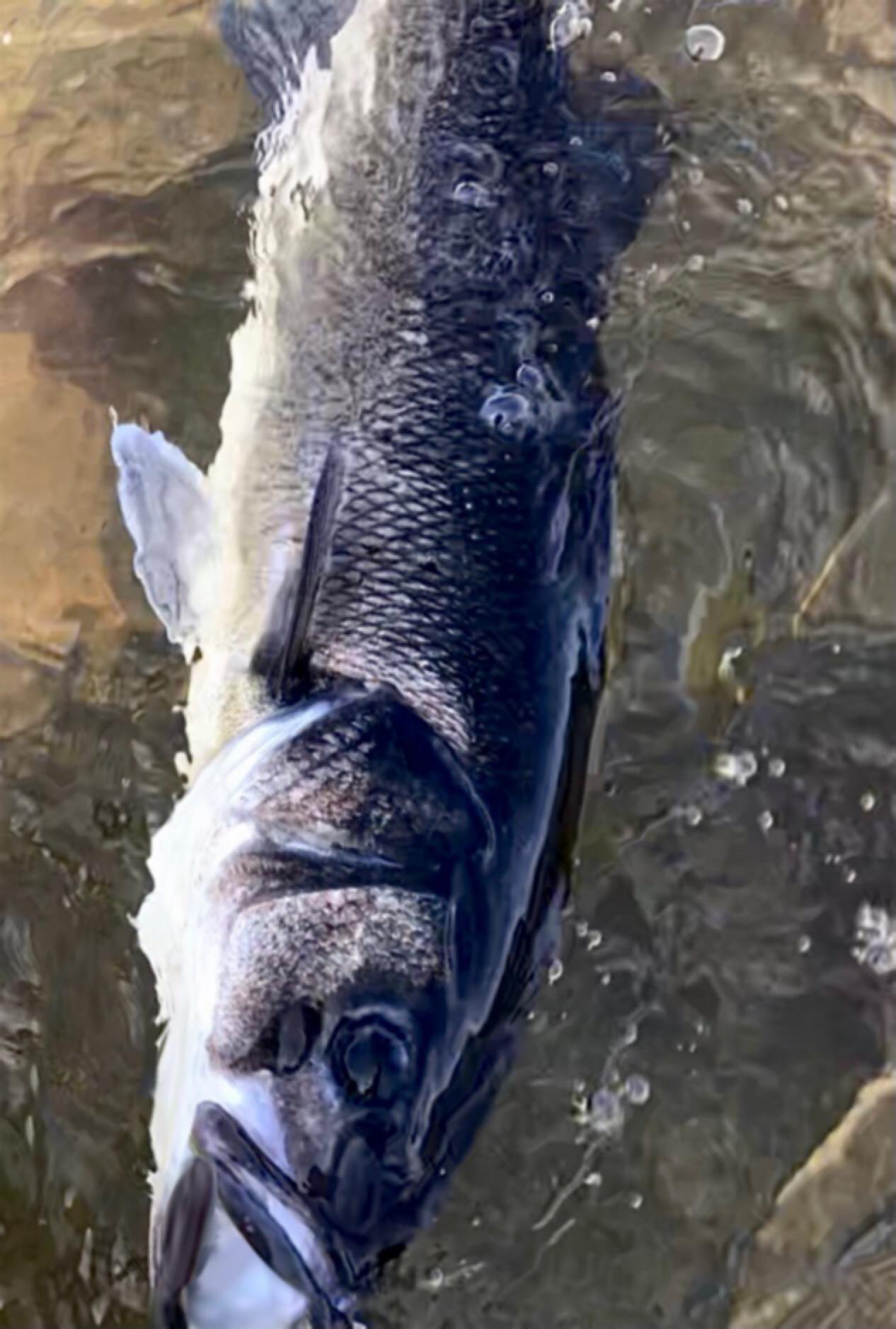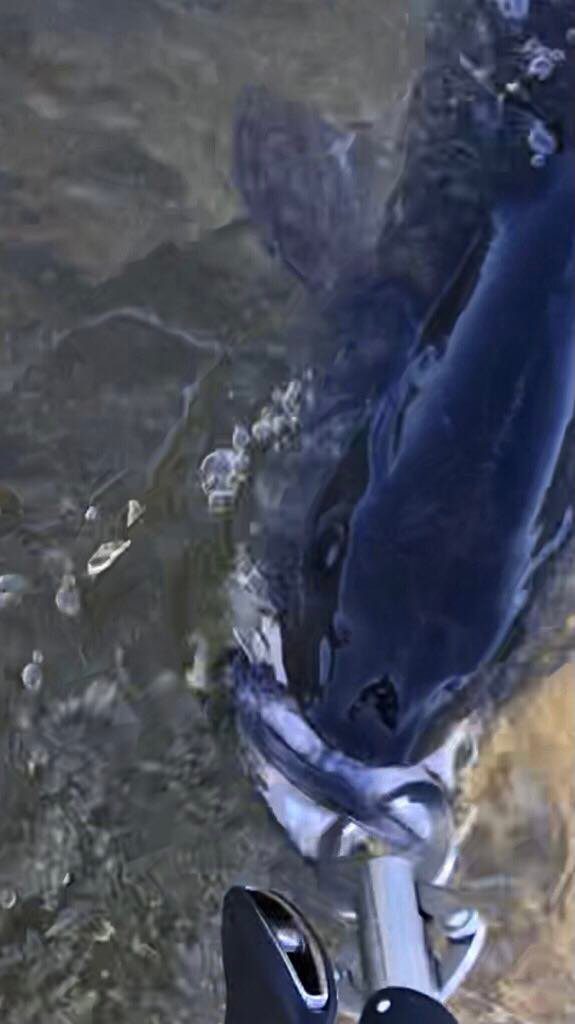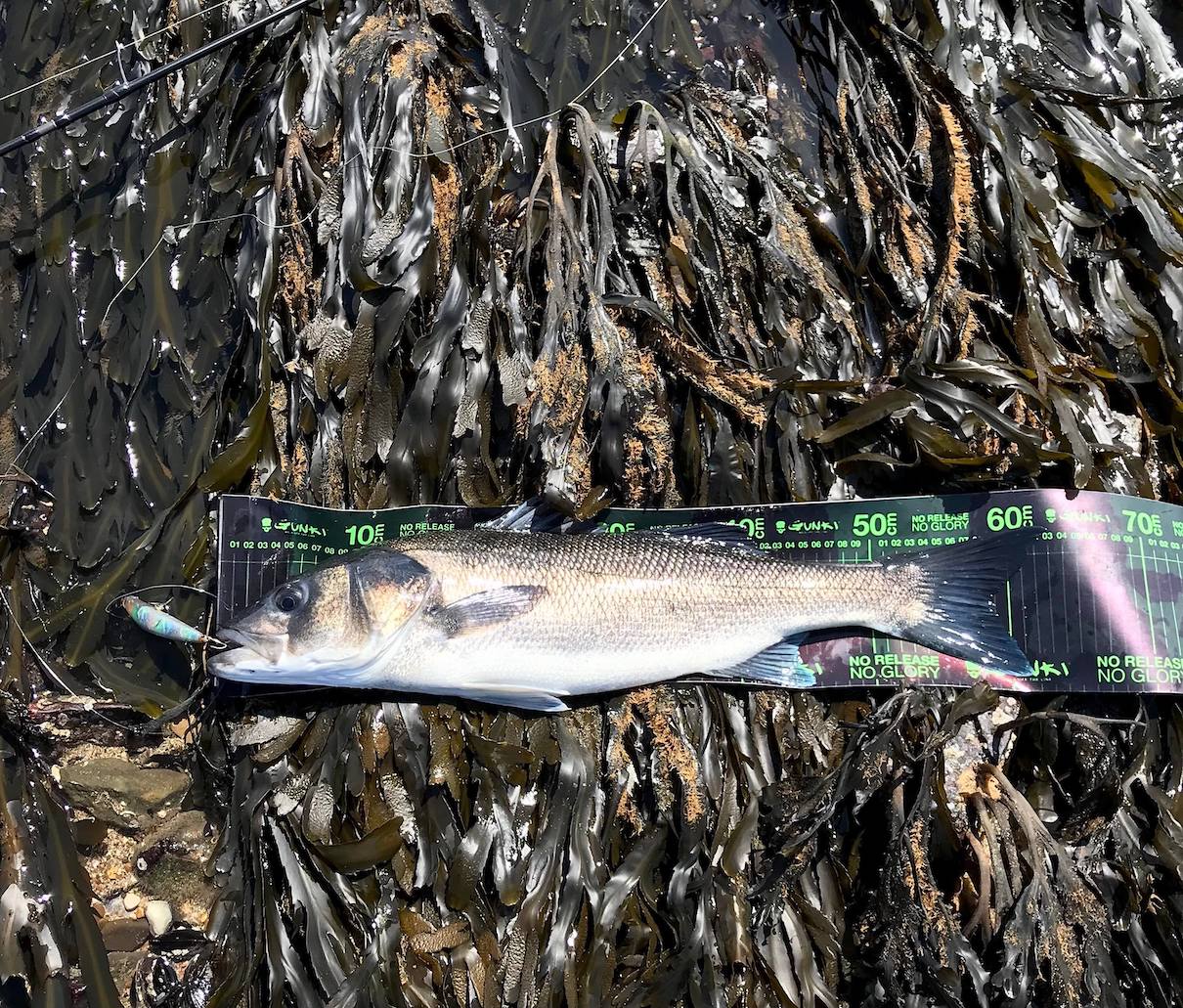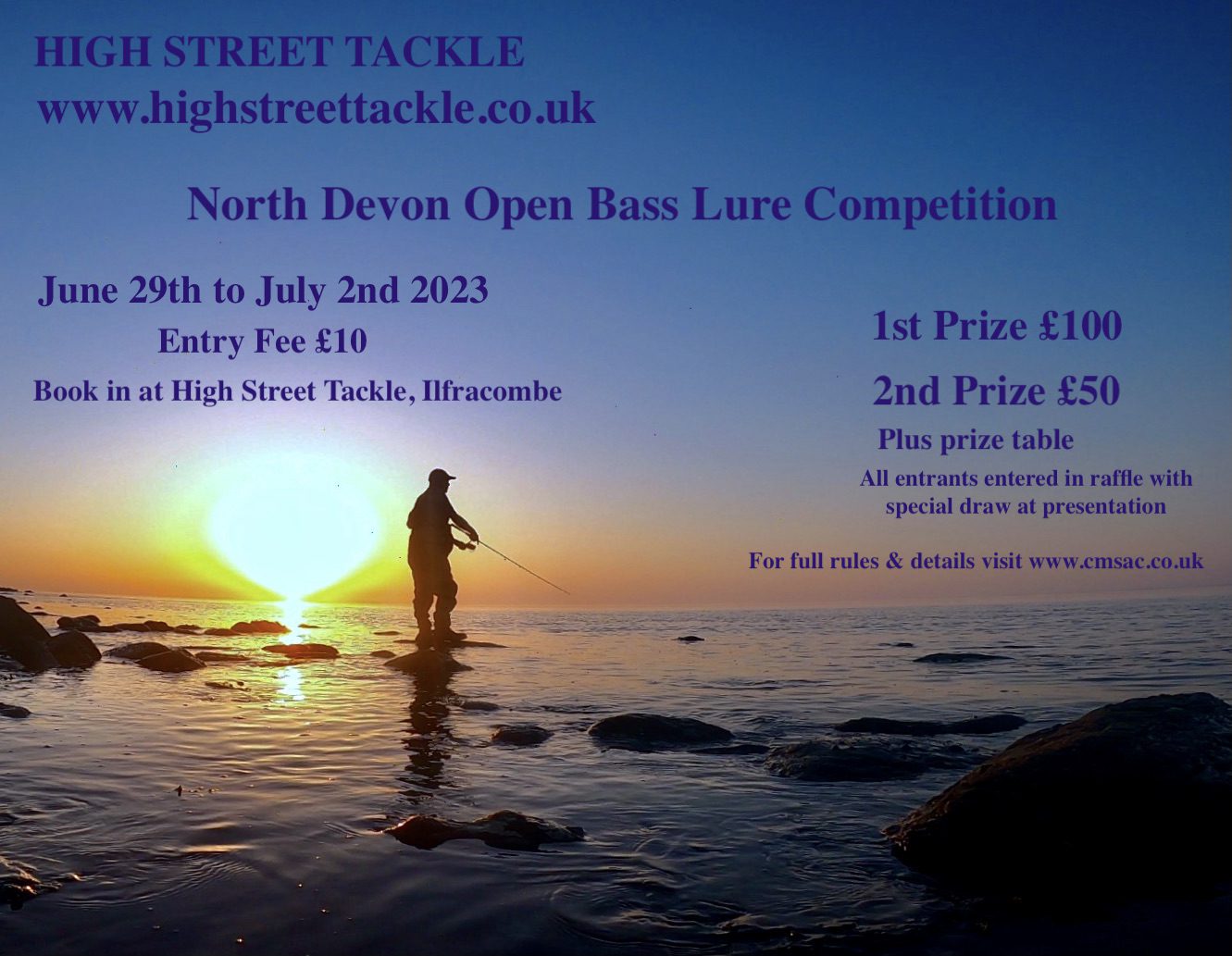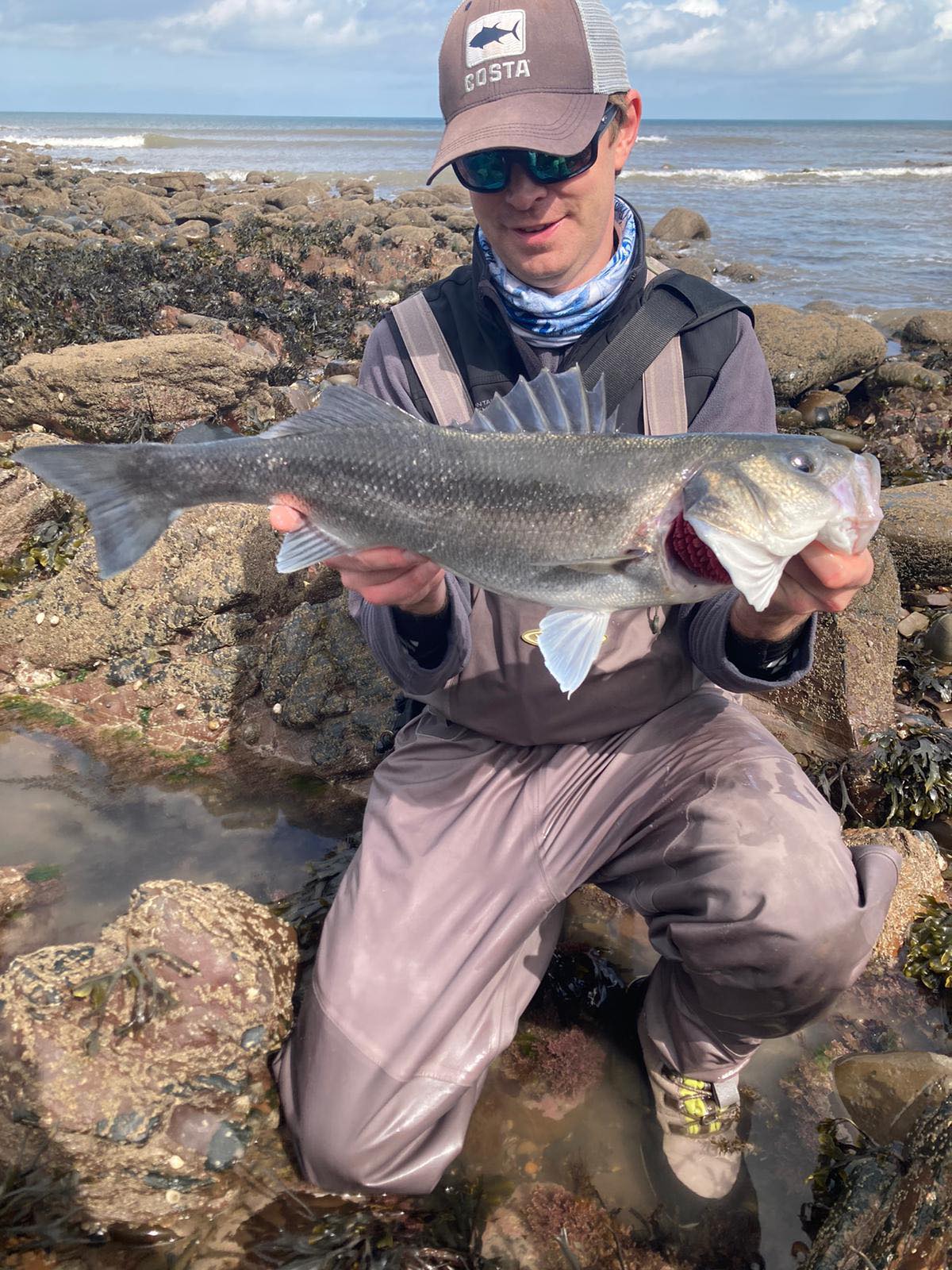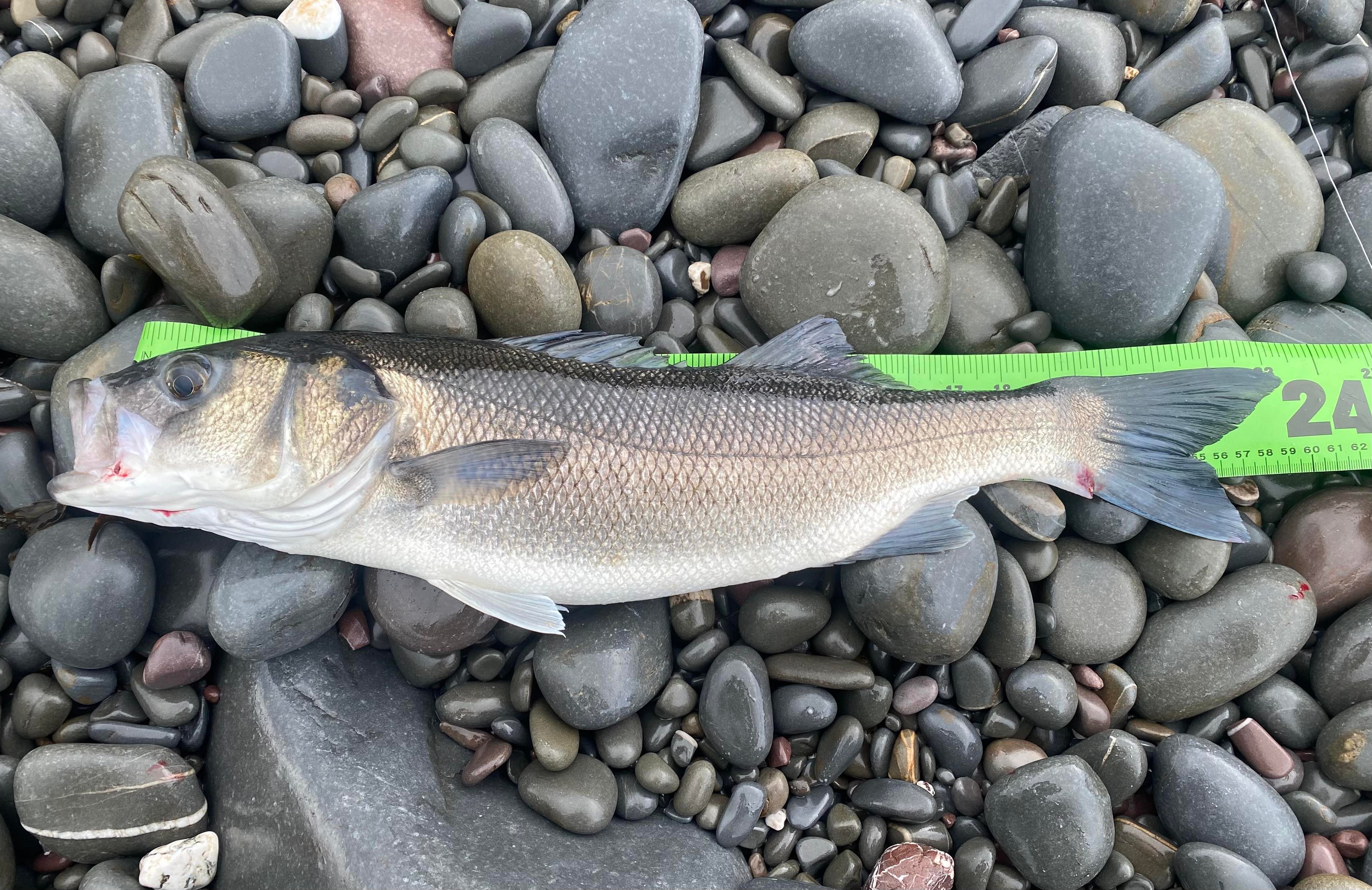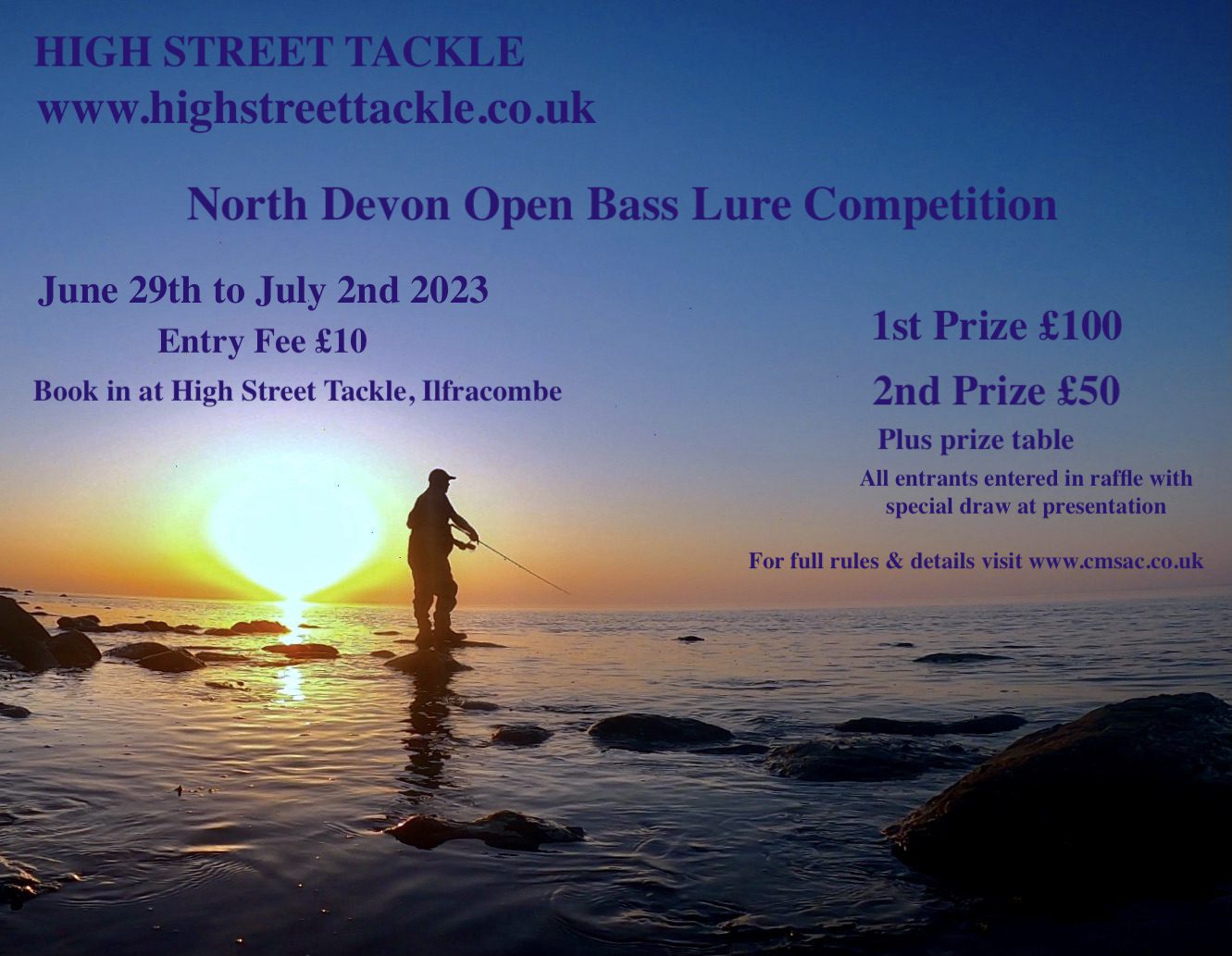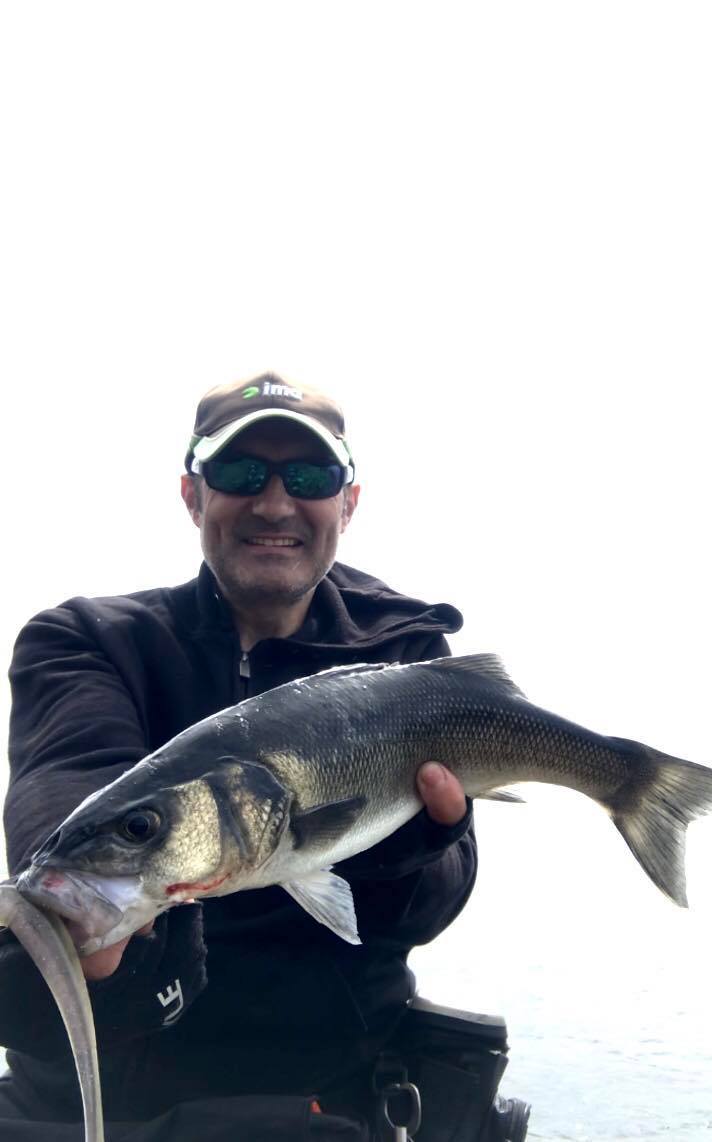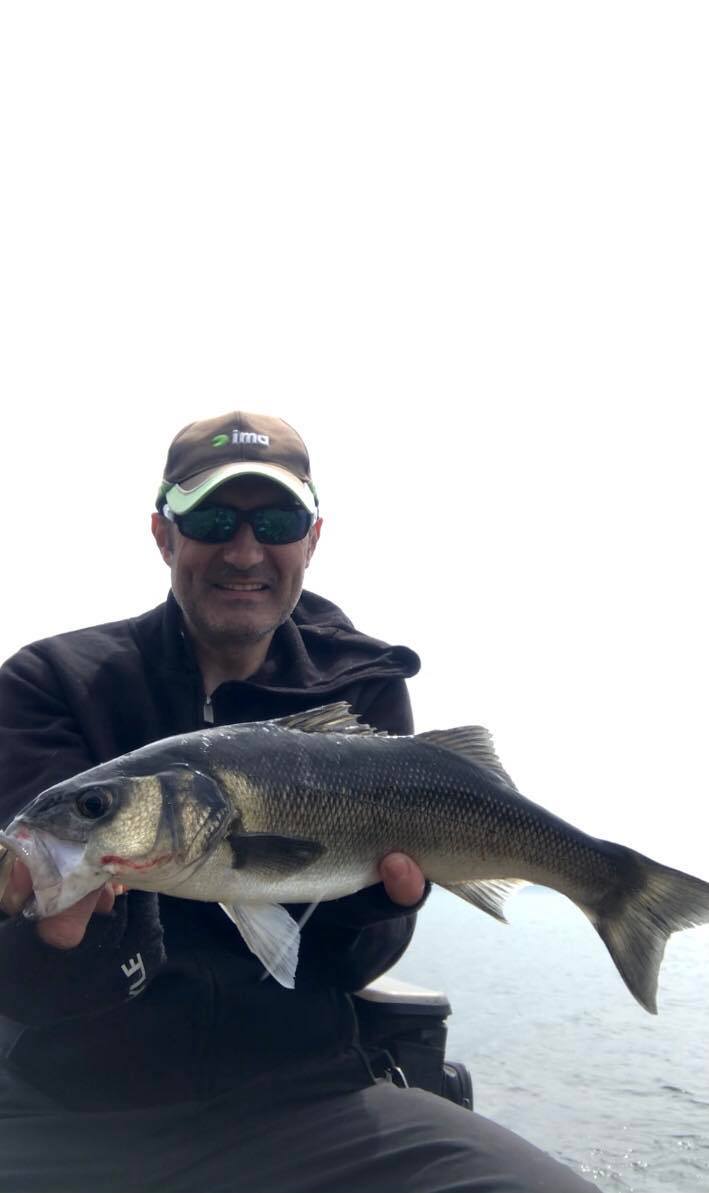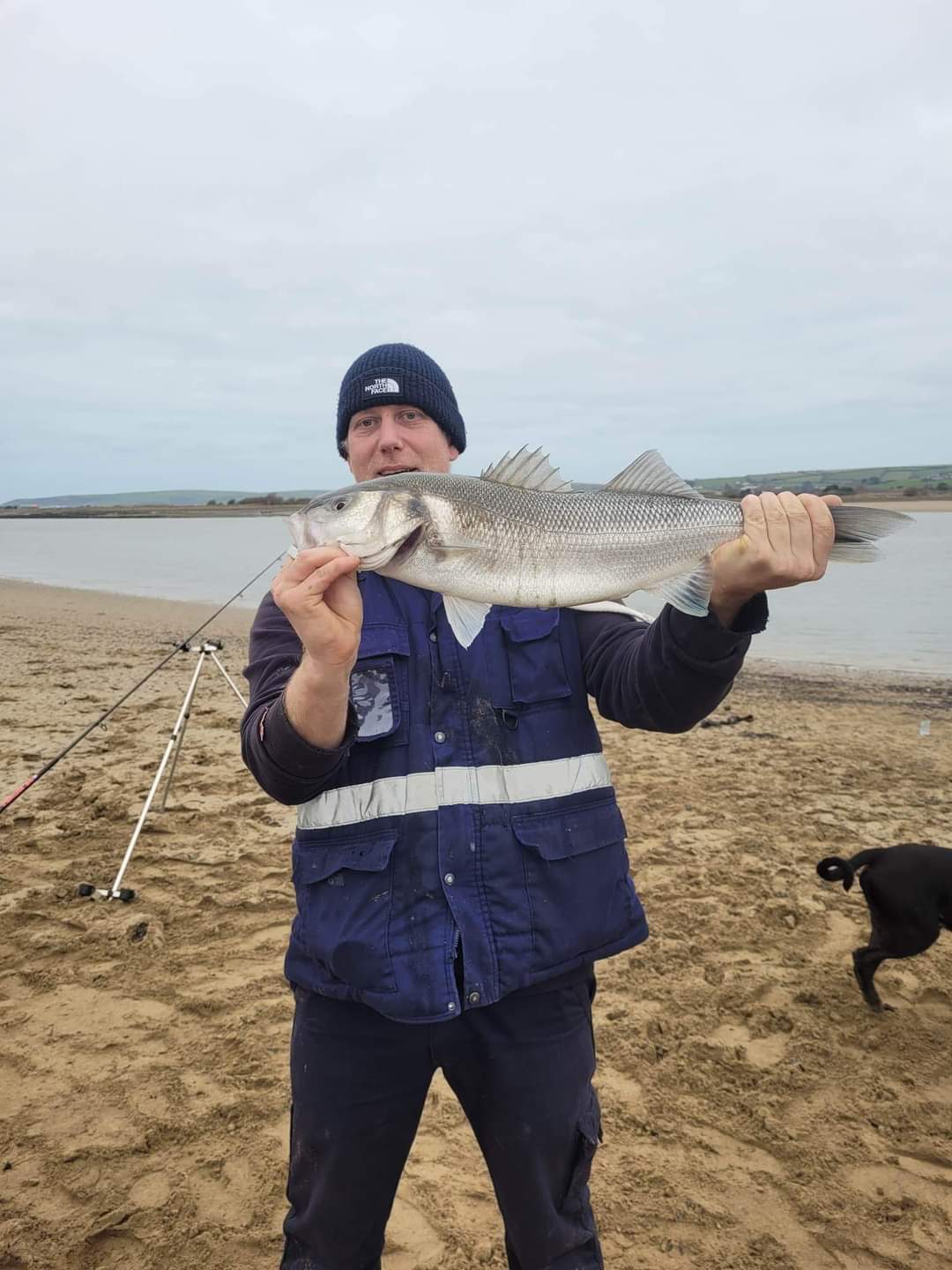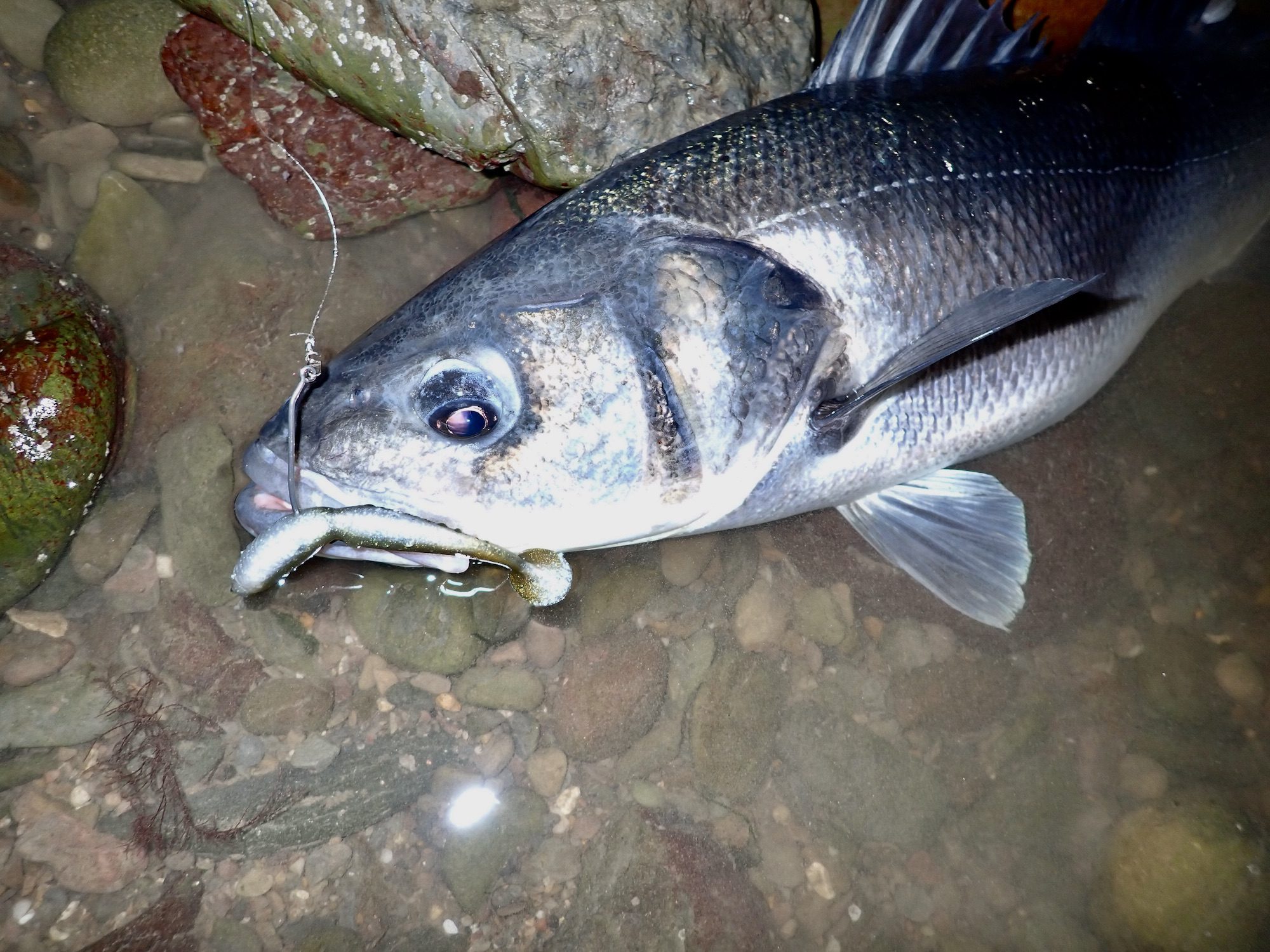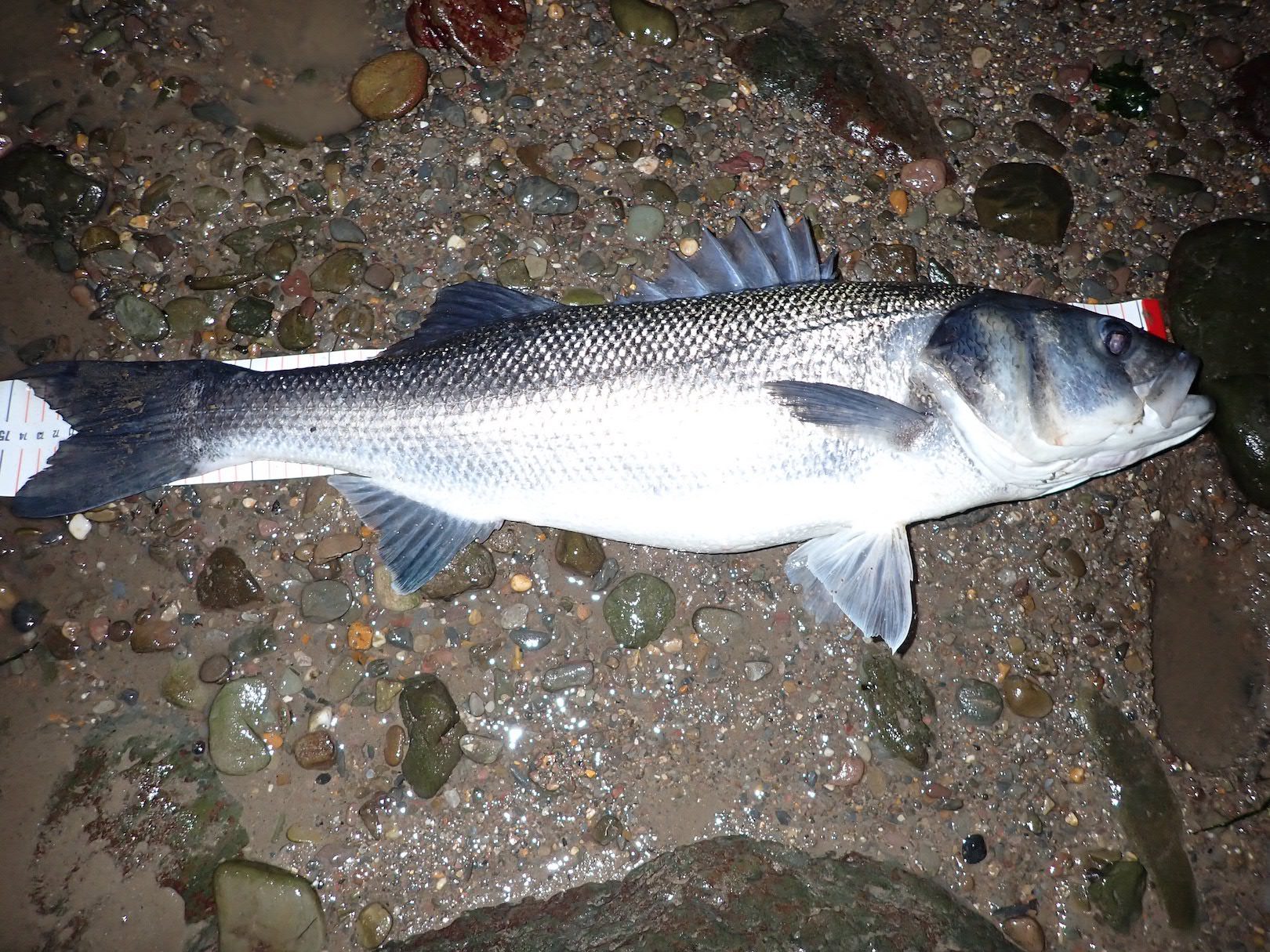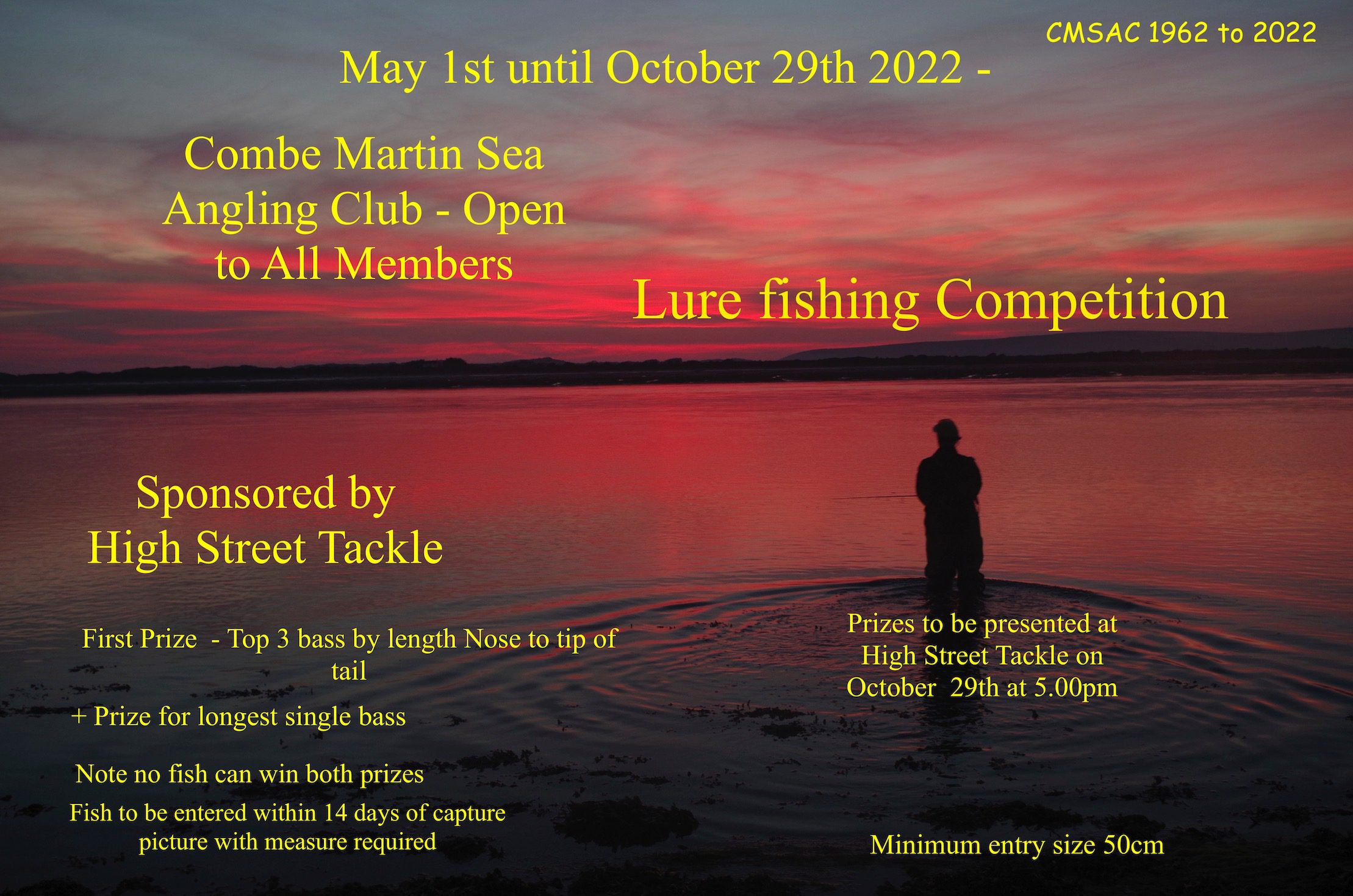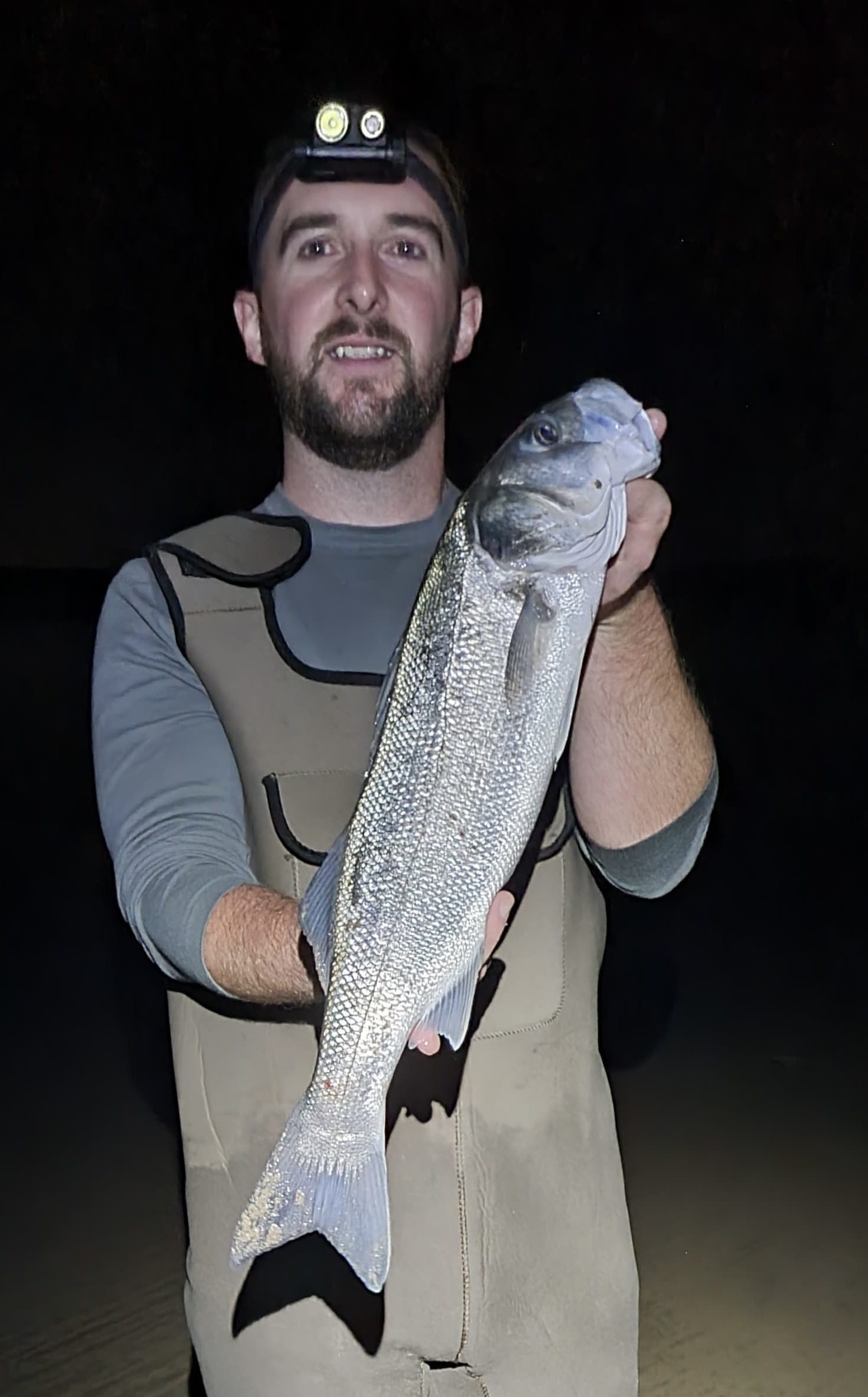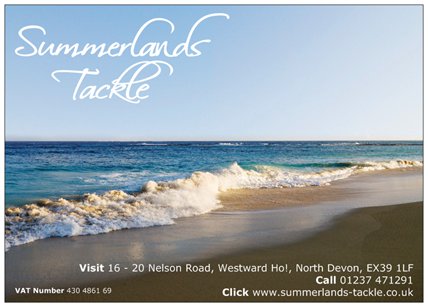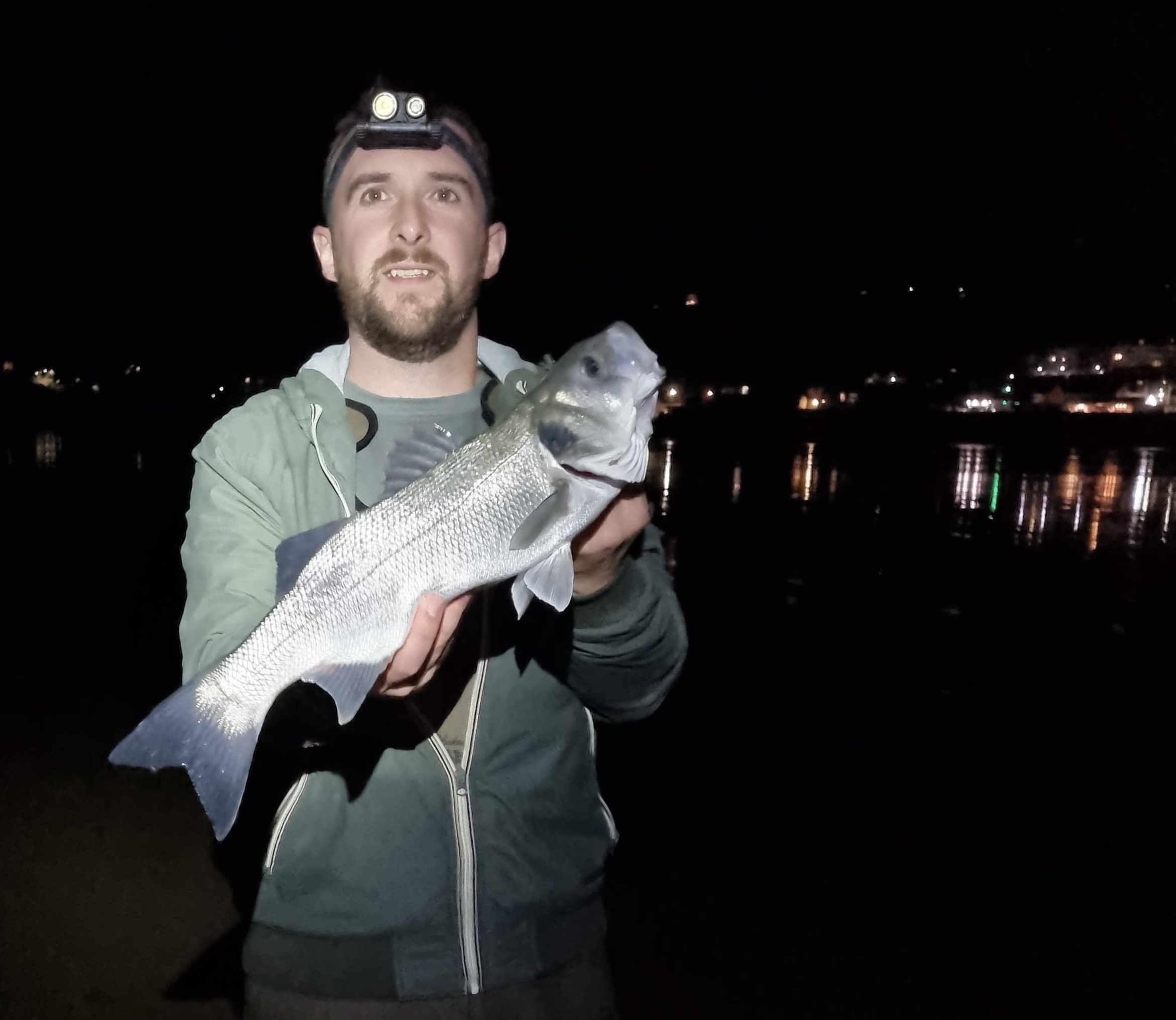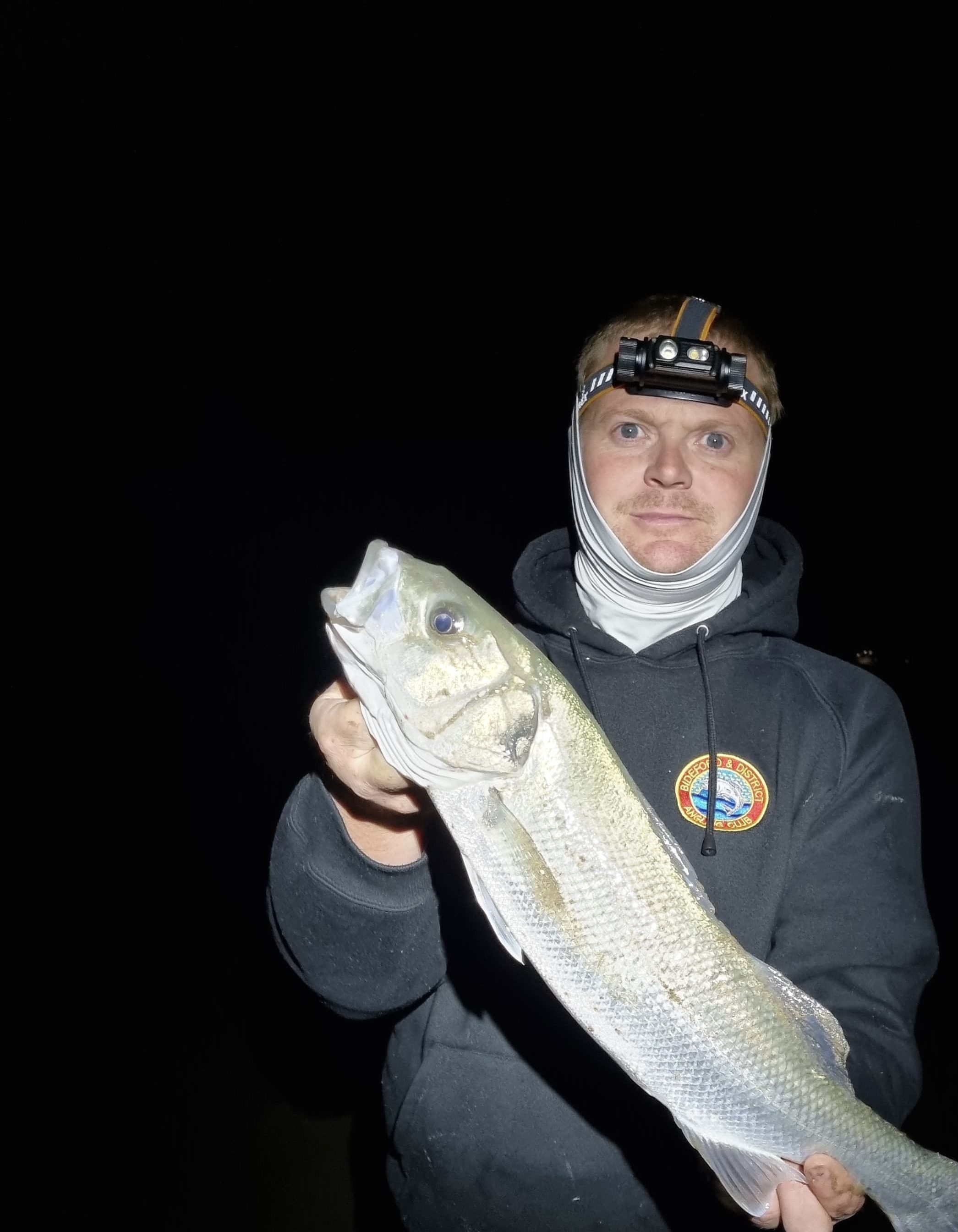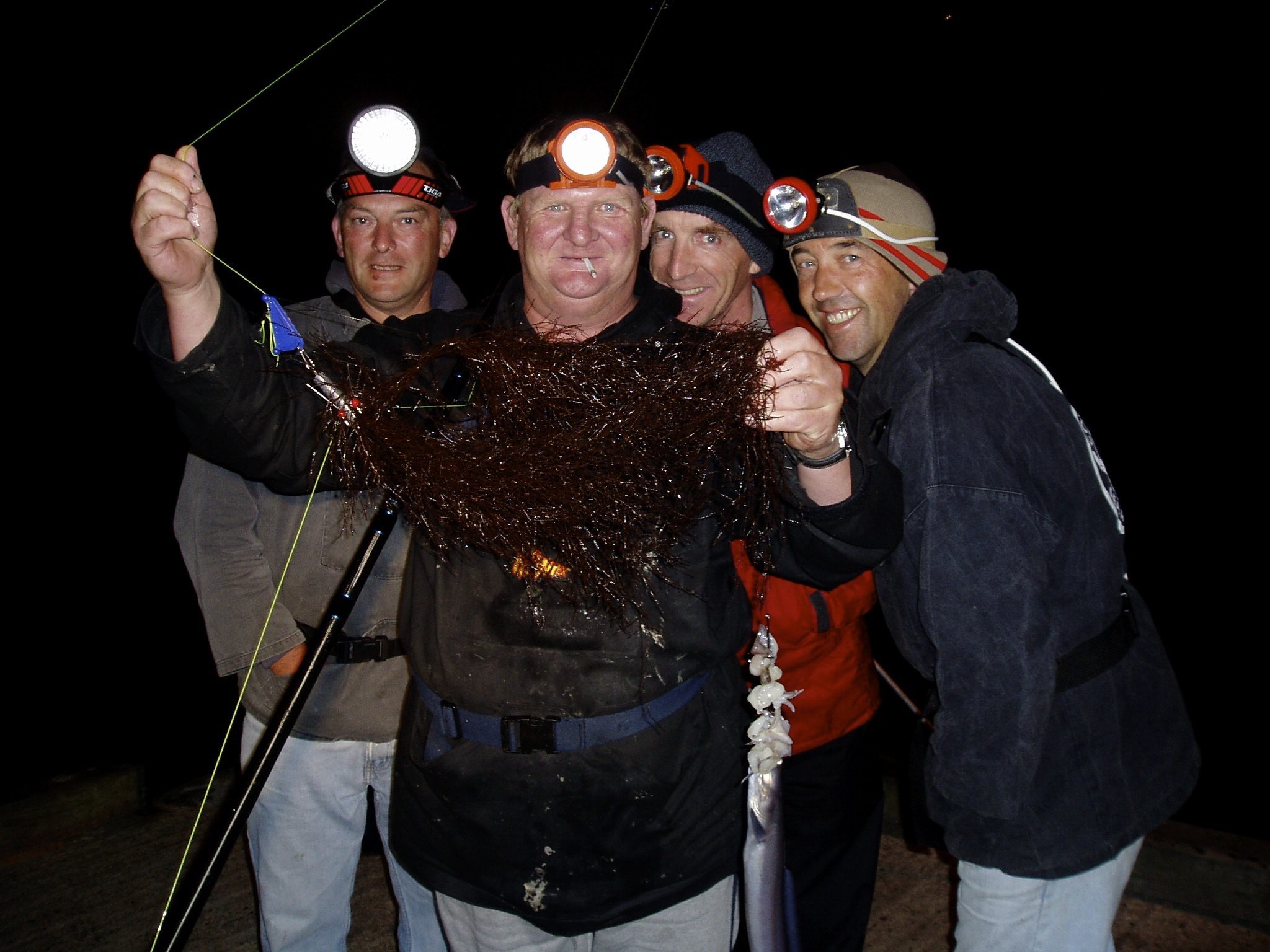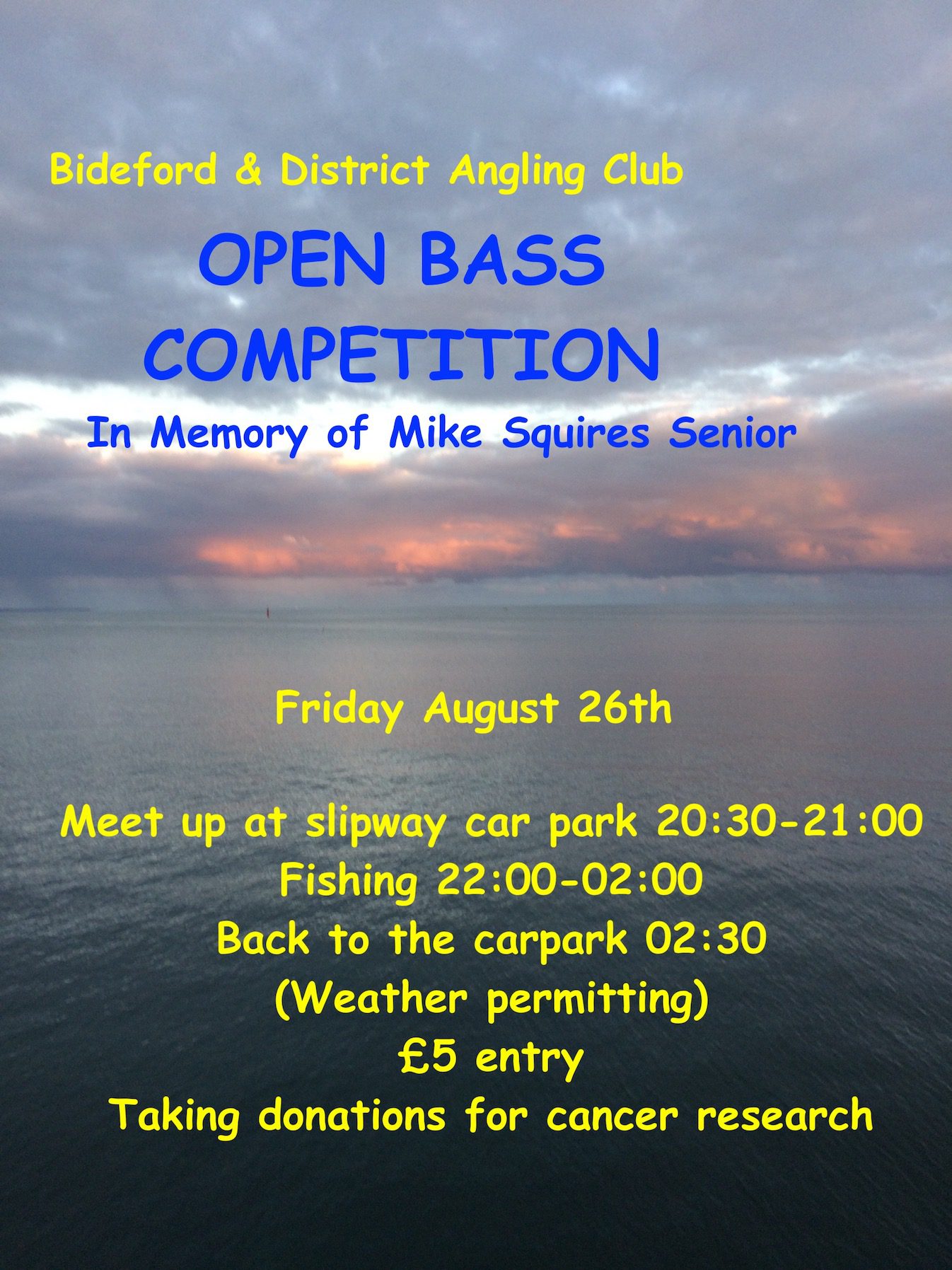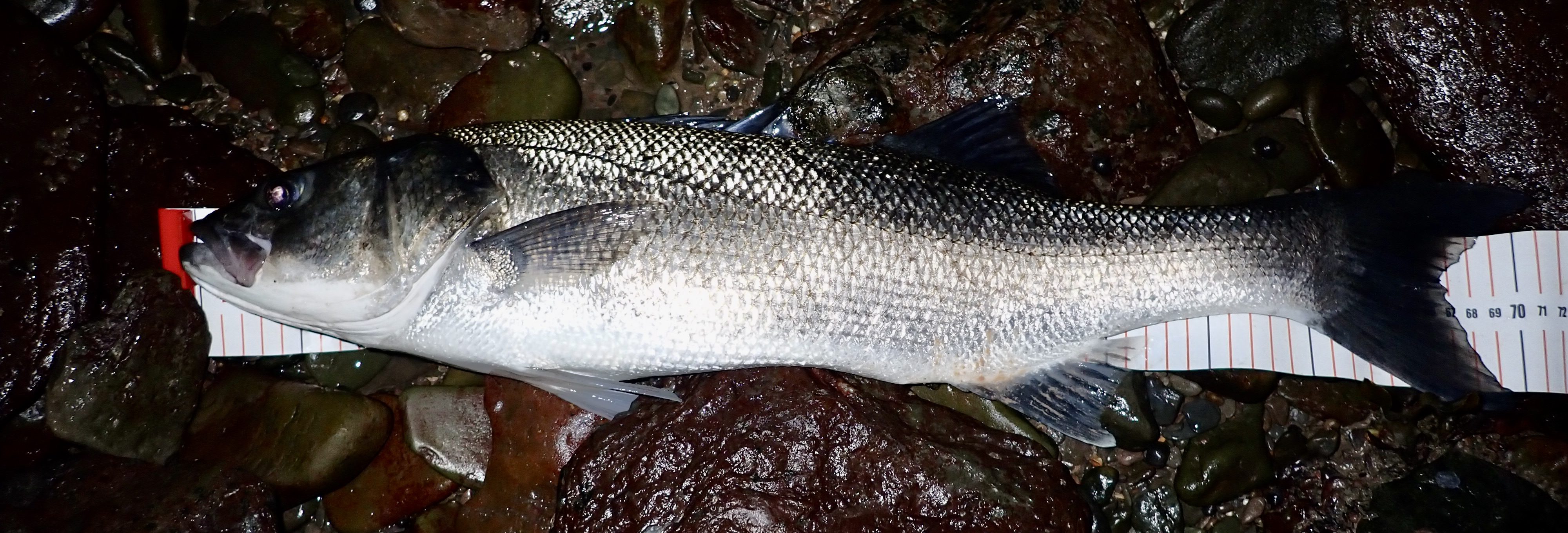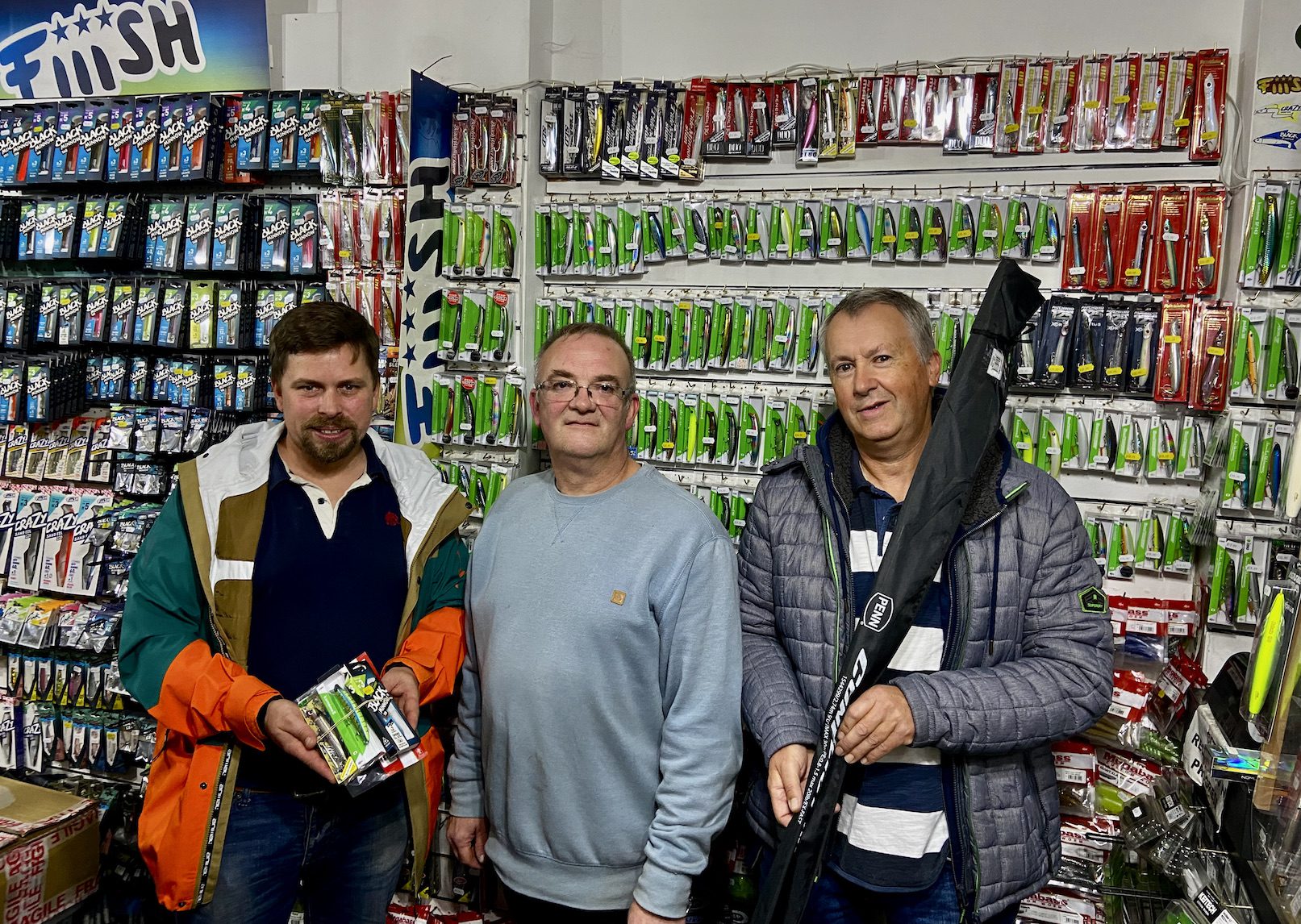
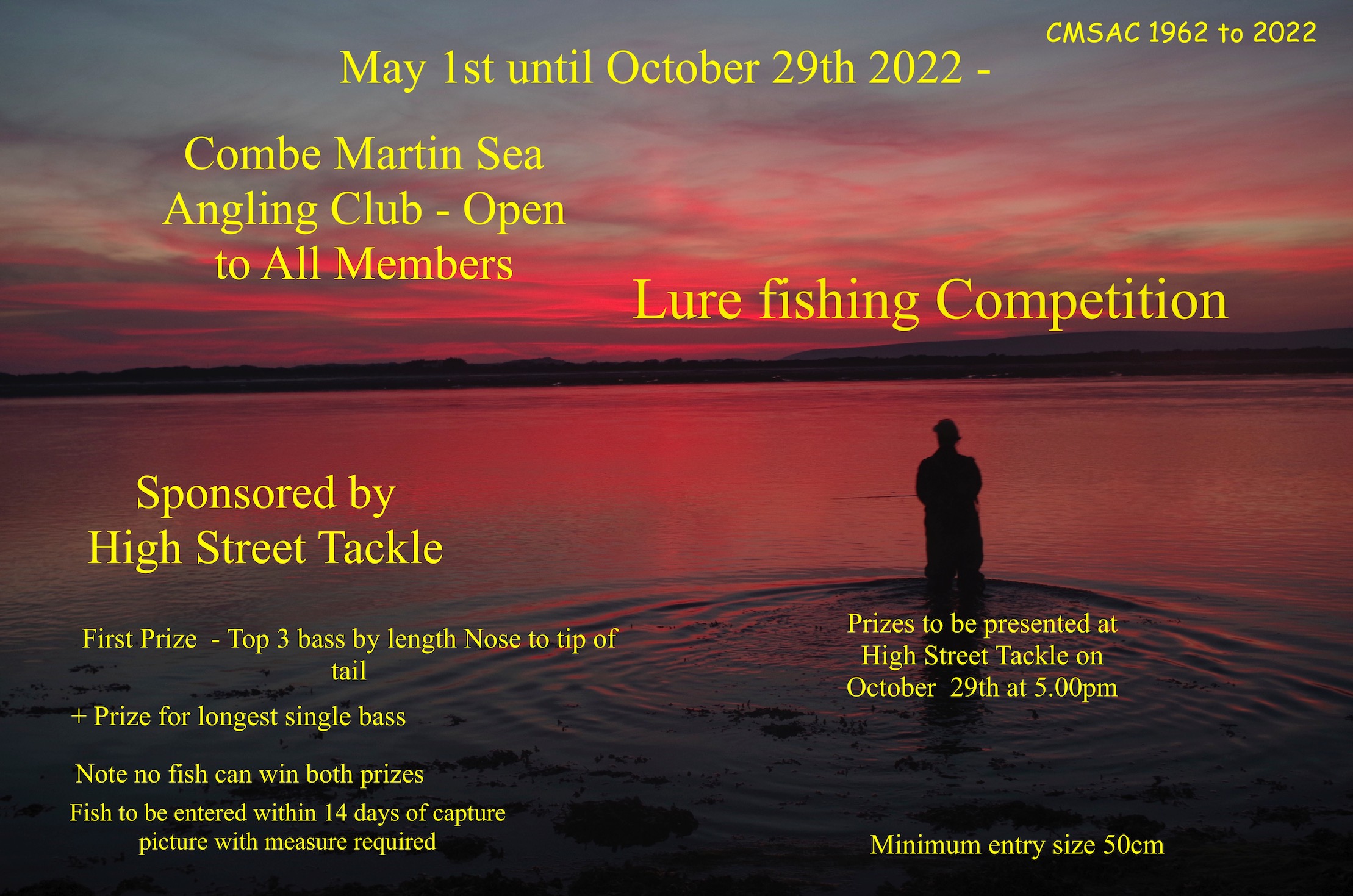
Combe Martin Sea Angling Clubs Lure Fishing Competition generously sponsored by High Street Tackle concluded on Saturday, October 29th, with presentation of prizes at Danny Watsons High Street Tackle Shop in Ilfracombe.
I ( Wayne Thomas) was fortunate to take the first prize of a Penn Conflict XR Lure Rod with Dan Welch securing the runner up prize of a lure bundle worth close to £100.
Results – All lengths are actual with weights estimated via B.A.S.S Calculation charts for length to weight.
Wayne Thomas – Bass
74.5 cm 9lb 12oz
69 cm 8lb
68.5 cm 7lb 12oz
Total 212 cm
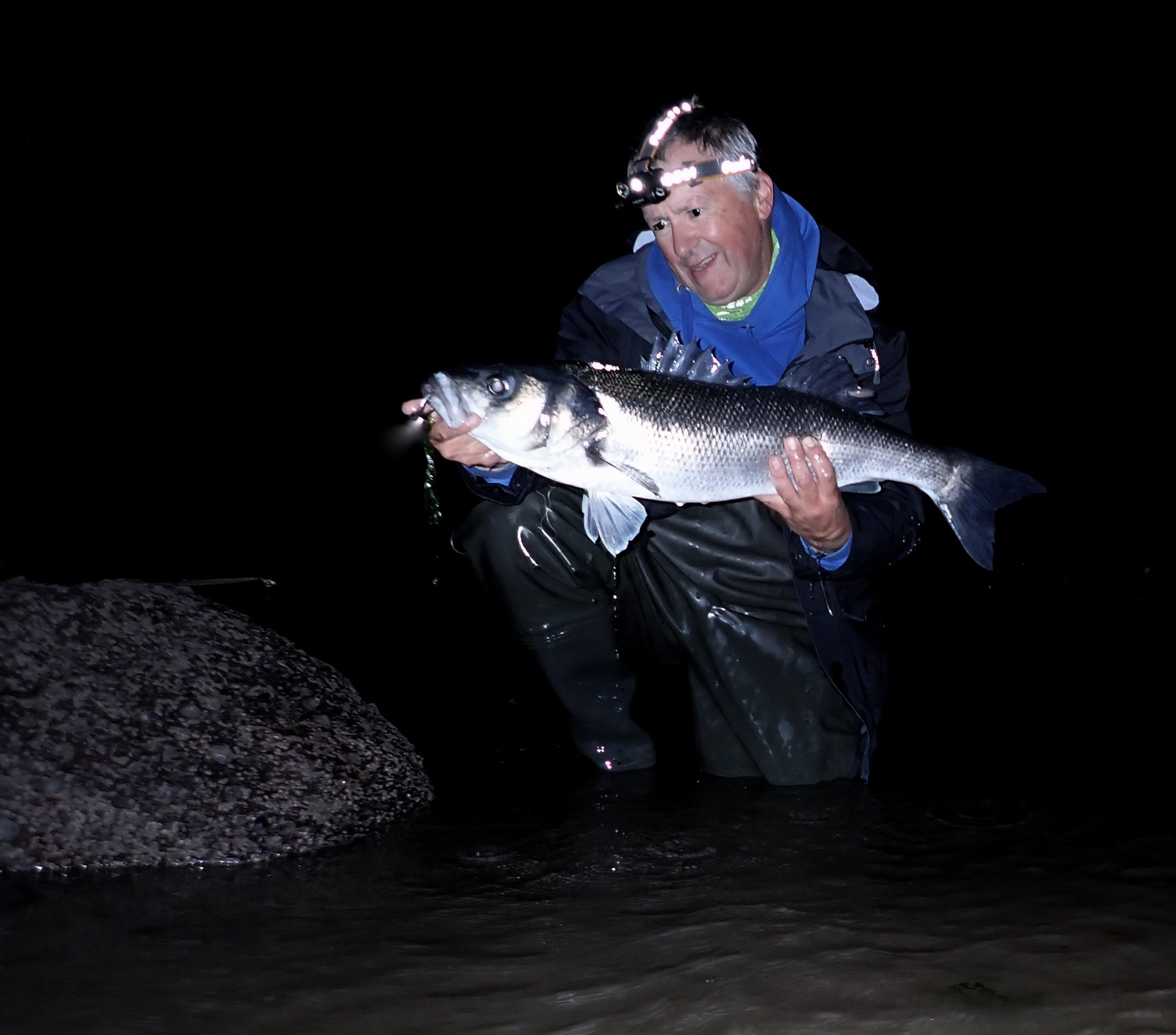
Daniel Welch
68 cm 7lb 12oz
66 cm. 7lb 2oz
61 cm 5lb 1oz
Total – 195cm
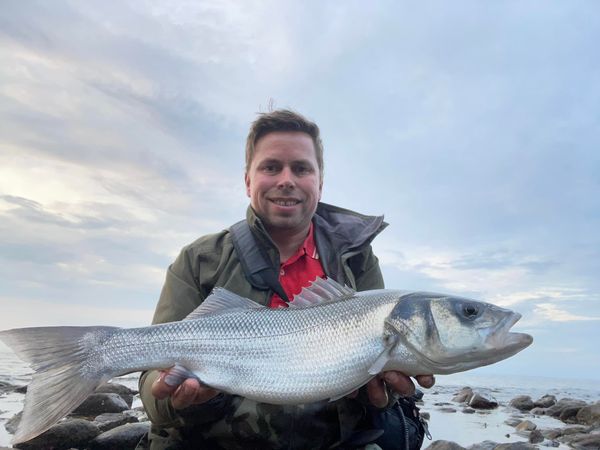
Solly Welch ( Junior)
58 cm 4lb 12oz
58 cm 4lb 12oz
57 cm 4lb 8oz
Total – 173cm
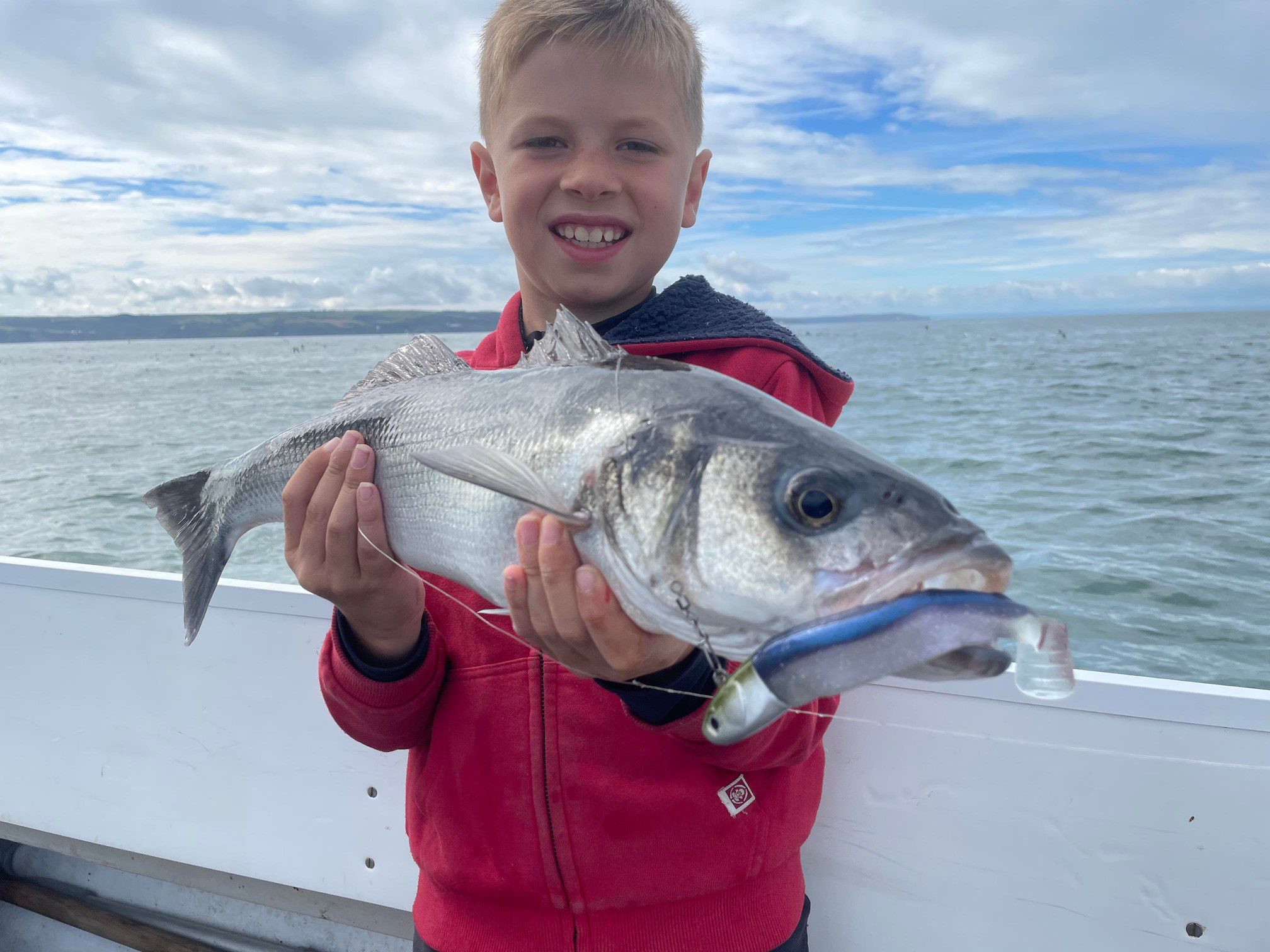
James Corner
62 cm 5lb 13oz
60 cm. 5lb 4oz
Total 122 cm
David Jenkins
55 cm 4lb
53 cm 3lb 12oz
Total 108 cm
Peter Robinson
62 cm 5lb 13oz
Effie Welch
53 cm 3lb 12oz
The club would like to thank Danny at High Street Tackle for his generous support throughout 2022. We look forward to working with Danny in 2023 whe he have exciting plans for another bass lure league for club members and an Open Lure Fishing competition fished over a weekend. More details and dates to be confirmed in the New Year.
North Devon has a vast potentail for lure fishing with beaches, rocks and estuaries providing a wide variety of opportunities. The fishing on offer can certainly match fishing in more high profile areas like Southern Ireland, Pembrokeshire and Cornwall. We owe it to our local angling community to promote what we have to support the local economy.
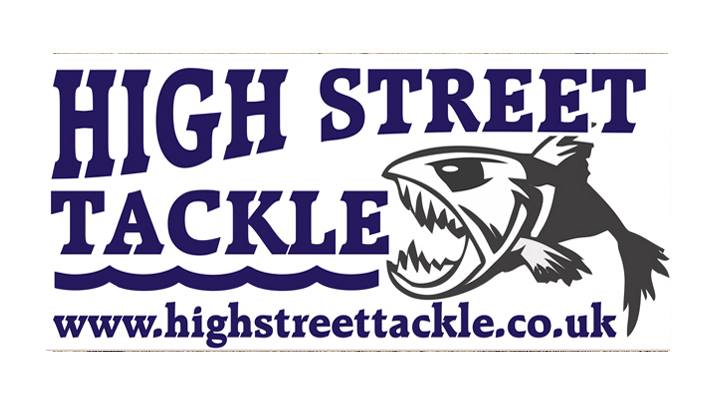
The NEW IMA Komomo SF125MRD….
The ever popular IMA Komomo SF125 has had an update –
Weight increased to 18g
Addition of MRD casting assistance
New diving range 5-50cm
3 brand new colours…..

|
